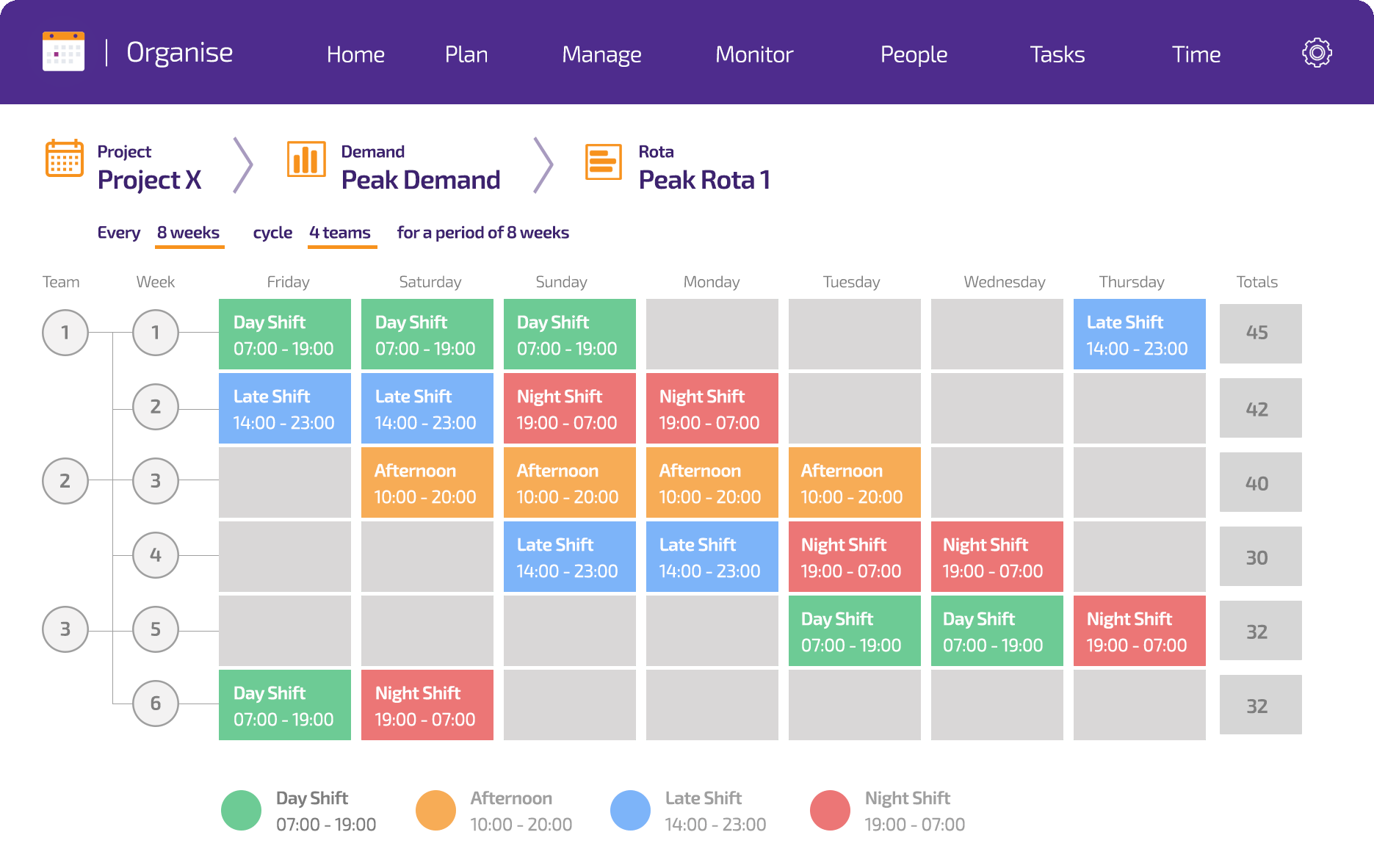Guide: Planning annual leave for shift workers
Getting rid of holiday headaches…

How annual leave is allocated
Summer holiday challenges:
- With traditional holidays on request gross hours’ systems there is a perception that people have more choice than they do.
- Effect on morale if shift workers are denied time off.
- Productivity needs to be kept at the same level with a smaller workforce or temporary staff who are usually less skilled and arguably less committed.
- Over-reliance on costly overtime.
- Organisations may have their peak demand in the summer, further exacerbating the problem.
- Holiday requests can become concentrated if the end of the company holiday year coincides with the busiest holiday period.
Administration and annual leave
- Calculating entitlement – accruals, long service etc.
- Operating rules.
- Authorisation.
- Organising cover.
- Cancelling.
- Monitoring/tracking/checking.
- Payment (they might not be paid at standard rates of pay).
- Notification of forthcoming year and the possibility of losing holidays if they are not taken.
- ‘Double management’ – e.g. carrying holidays forward to the next calendar year and ensuring they’ve been used.
- 1. Employee: Getting form, checking with colleagues as appropriate, filling it in, chasing it up = circa 30 minutes per request
- 2. Supervisor: Checking form, checking spreadsheet, requesting info on T&A, authorising (or dealing with fall out) = circa 30 minutes per request
- 3. HR / T&A / Ops Manager / Other: Further support, liaison or approval = circa 30 minutes per request
Arrange a session with one of our experts where you can discuss the challenges you face and talk in broad terms about potential solutions and next steps.

Gross hours’ systems and Demand-Led Rostering
Gaining employee buy-in

Reduced administration time
- Calculating entitlement – as per the gross option.
- Operating rules – for example, shift swaps.
Workforce management software

Arrange a session with one of our experts where you can discuss the challenges you face and talk in broad terms about potential solutions and next steps.






